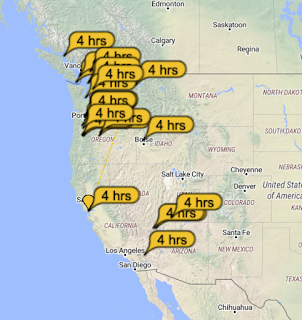Wanted to make some EFHW antenna for portable use. I really should use a larger toroid, but the largest I had was an FT50-43, so thought I'd try with that. I printed this from thingiverse, but used the smaller toroid. Cut the wire for 20M and trimmed it while measuring with the NanoVNA. Tried FT8 and WSPR with 5W. Seemed to work pretty well. The only thing I found is that scanning the SWR with the G90, sometimes I would get this thing where the SWR was super low, and then would jump up super high. Not sure if that was something having to do with the tuner in the G90 or what. Also, at one point I had it tuned and tried a higher power (to see if the toroid would get hot), and the SWR jumped up while transmitting. Don't know if that is some sort of common mode current or what.
Overall though, pleased with this antenna. The wire winds up nicely on the form, and was able to get out. I'm not sure if it is particularly better than the DS-1 vertical, though. Will need to make this again using a larger toroid and do some side-by-side experiments.























